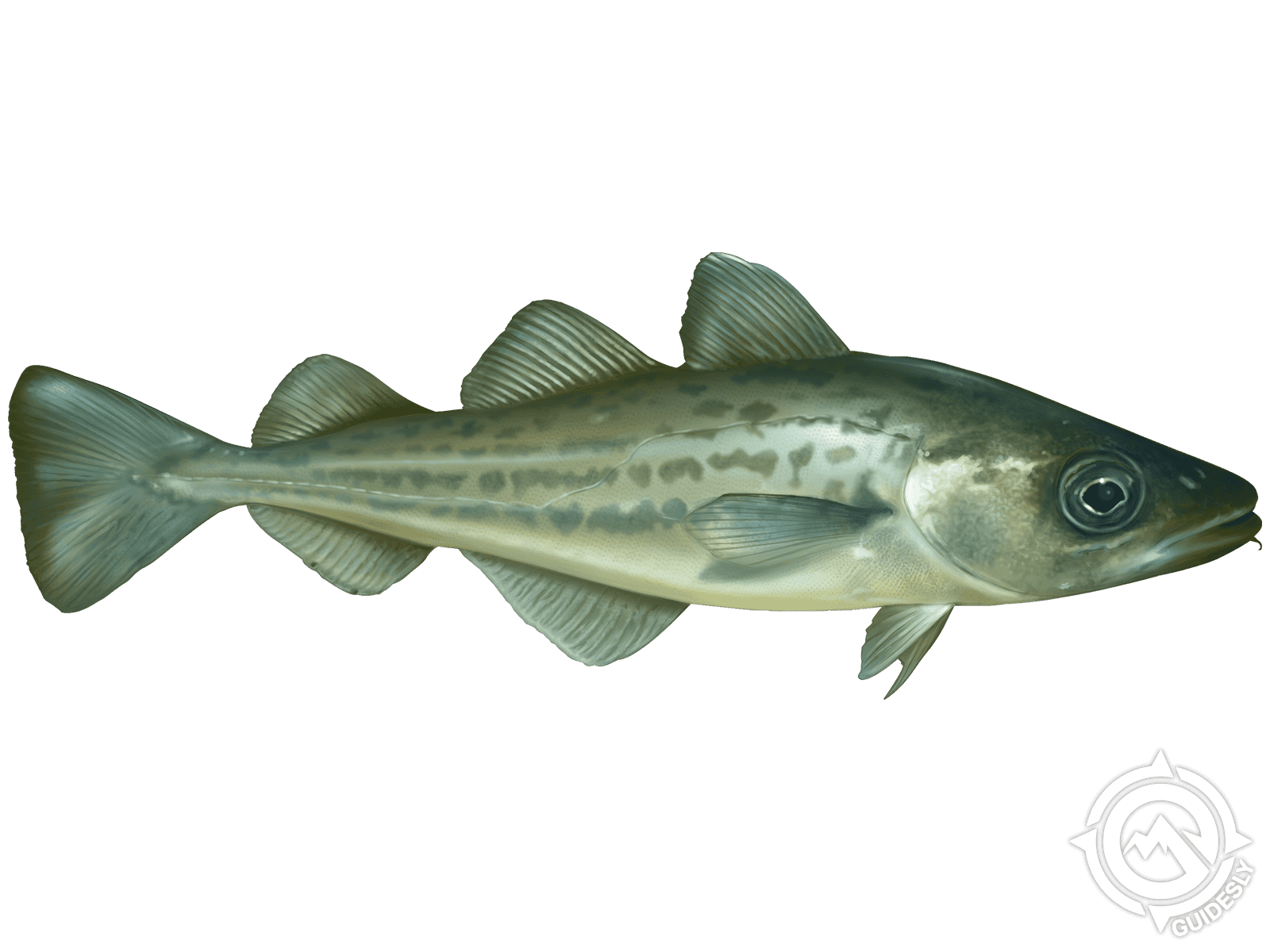Atlantic Tomcod

Species Details
Microgadus Tomcod
Gadidae
Gadiformes
Onshore, Nearshore
0 - 1 lbs.
6" - 14"
Atlantic Tomcod (Microgadus tomcod) Fish Description
An Atlantic Tomcod is known for its long pelvic rays and rounded tail. It also has dark spots that cover its back and sides. Colorwise, the Atlantic Tomcod appears to be a dark olive gold from the back before turning bright gold towards the middle. Its belly, like most fish, is bright white. The fins are a translucent gray with dark spots all over it. The only fins that don’t have those marks are the Atlantic Tomcod’s pectoral fins which is more of an orange-red color.
Body structure-wise, the Atlantic Tomcod is a slender fish. Despite it being small, the Atlantic Tomcod has three dorsal fins and two anal fins. You’ll notice also right beneath its chin it has a short pale pink barbel.
Diet and Size
Atlantic Tomcods, as winter fish, can survive on a variety of frozen food. They can also handle some freeze-dried food. Atlantic Tomcods also feast on larvae and small crustaceans such as shrimp. They have a taste also for mollusks and fish larvae. They’re also known to eat their own eggs… So much for parental instinct.
Atlantic Tomcods are small. So, most people wouldn’t really catch an Atlantic Tomcod as a gamefish but more as bait. They barely weigh a pound and usually are only 6-10 inches. The longest Atlantic Tomcod ever found was 14 inches.
Interesting Facts about the Atlantic Tomcod
- Atlantic Tomcods have different names such as Tommycod, Frostfish, or Winter Cod.
- Atlantic Tomcods developed a toxic resistance against PCBs (polychlorinated biphenyls).
- Years ago, General Electric dumped PCBs into the Hudson River where most of the Atlantic Tomcods were staying. Eventually, 90% of the population in that river developed an immunity to that toxin.
- These fish also have been mentioned in popular media.
- Atlantic Tomcods have a preference to have a little salt in their water.
- In the 1800s, people would love to eat Tomcods. Now, they’re only seen as gamefish.
- Or not even as gamefish, more like baitfish.
- They were once called London Trouts.
- Atlantic Tomcods apparently don’t like higher temperatures and have moved towards water bodies with cooler temperatures.
Fishing Techniques: How to catch an Atlantic Tomcod
The best way to catch them is to fish for them in the winter. The colder it is, the better is it is for the Atlantic Tomcod. There's a reason why people nicknamed them the Frostfish. When fishing for an Atlantic Tomcod, the best place also to go to is a water body like the Hudson River Park where many of them are. This is where they’re usually abundant especially during winter.
For bait, the best one to bring is shrimp according to anglers. Atlantic Tomcods don’t mind however whether it’s alive or not. They are known to take in freeze-dried or frozen baits. And make sure you use lightweight tackle and small hooks, they’re small so no need for heavy-duty gear unless you get snagged on the ice.
Habitat and Distribution
Atlantic Tomcods are very attracted to eelgrass. Usually, amongst the shallow eelgrass, Atlantic Tomcods use those spots to lay their eggs. They usually follow tidal rivers and stay in the mouths of streams or estuaries. Depending on the season, Atlantic Cods are usually more active in the streams and estuaries during winter. They usually appear in the St. Lawrence River and the Gulf of St. Lawrence.






